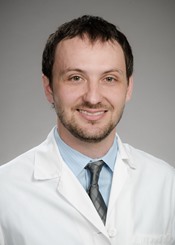Program Information
Normal Liver Radiation Dose-Response Modeling in Hepatocellular Carcinoma Patients with Longitudinal Sulfur Colloid SPECT/CT Imaging
R.G. Price*, S.K. Schaub , M.J. Nyflot , T.R. Chapman , M. Matesan , H.J. Vesselle , S. Apisarnthanarax , S.R. Bowen , University of Washington, School of Medicine, Seattle, WA
Presentations
TU-H-FS4-7 (Tuesday, August 1, 2017) 4:30 PM - 6:00 PM Room: Four Seasons 4
Purpose: Hepatotoxicity risk in hepatocellular carcinoma (HCC) patients is modulated by radiation dose-response of normal liver tissue, but reported data are limited. Our prior work established baseline [⁹⁹ᵐTc]sulfur colloid (SC) SPECT/CT liver function biomarkers that predict clinical outcomes. We utilized longitudinal SC SPECT/CT to characterize patient-specific radiation dose-response as surrogates for liver radiosensitivity.
Methods: SPECT/CT images of 14 HCC patients with variable Child-Pugh status (7 CP-A, 7 CP-B/C) were acquired in treatment position prior to and 1 month (nominal) after SBRT (n=6) or proton therapy (n=8). Rigid registrations between pre/post-Tx CT to planning CT scans was performed, and transformations were applied to pre/post-Tx SC SPECT images. RT doses were converted to EQD2α/β=3 and Gy RBE, and binned in 5 Gy increments within tumor-subtracted livers. Mean dose as well as percent change (%ΔSC) between pre- and post-RT SPECT uptake, normalized to regions receiving <5 Gy, were calculated in each binned dose region. Dose-response data were parameterized by sigmoid functions (double exponential) consisting of maximum reduction (%ΔSCmax), dose midpoint (Dc), and dose-response slope (α) parameters.
Results: Sigmoid dose-response curves had high goodness-of-fit (R²>0.85). Large inter-patient variability was observed, with median (range) in %ΔSCmax of 65% (20-91%), Dc of 19 Gy (4-41 Gy), and α of 0.10 Gy⁻¹ (0.04-0.27 Gy⁻¹), respectively. Most patients (9/14) had tightly distributed dose-response slopes (0.06-0.10 Gy⁻¹) evenly spread between treatment modalities and CP status. Decreased total liver function (TLF) on SC SPECT/CT weakly correlated with lower Dc (ρ=0.5) and higher α (ρ=-0.5). Fatal hepatotoxicity occurred in patients (2/14) with low TLF (<0.12) and low Dc (<7Gy).
Conclusion: Longitudinal SC SPECT/CT imaging revealed variations in dose-response, and may identify patients with poor baseline liver function and increased sensitivity to radiation therapy. Validation of liver radiosensitivity imaging surrogates can guide HCC patient RT regimen selection and planning constraints.
Contact Email:
